One of the most common butterflies in the US. This white butterfly is easily identified by the white appearance. Look for the gray body to tell it from albino female sulphurs. Check the species page to see the rarer species that might be similar to the Cabbage White.
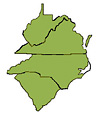 |
Wingspan: 1 1/4 - 1 3/4 inches Flight: Late February until mid November |
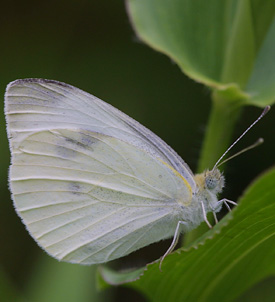
All white some might be yellowish or grayish
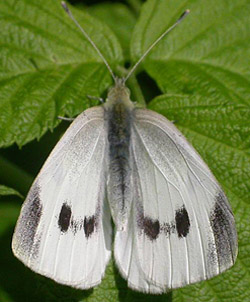
Female, note the two white spots on forewing
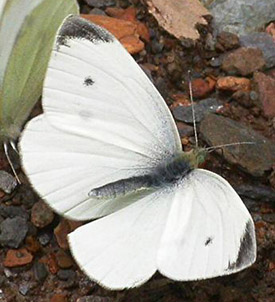
Male, note one white spot on forewing
This is an early spring flier; they are gone usually by the end of May although in the northern mountains they might be still flying in June. The male has the orange wing tip and it is easy to see even in flight. Falcate Orangetip tends to fly close to the ground and rarely visits flowers over two feet tall.
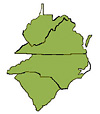 |
Wingspan: 1 1/4 - 1 3/4 inches Flight: Early March until early June |
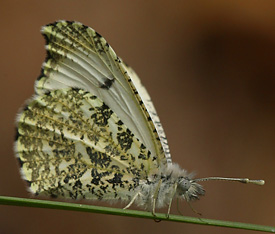
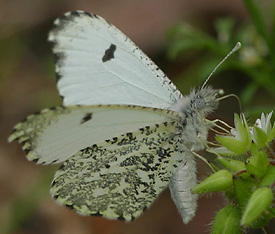

Very common, yet not easy to tell from the Orange Sulphur (next species down). The upperside wing margins are greatly reduced when compared to those of the Orange Sulphur. Both species tend to fly in large numbers in fields, meadows and gardens. Until you learn to tell these two species apart, you might want to just call them Colias species.
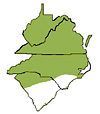 |
Wingspan: 1 1/2 - 2 3/8 inches Flight: Early March until late November |
There is much seasonal variation in both species. In the spring both are very greenish yellow; later in summer the Clouded Sulphur shows more yellow and the Orange Sulphur displays more orange as its name implies.
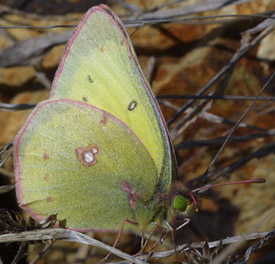
Male, note the dark margin on forewing.
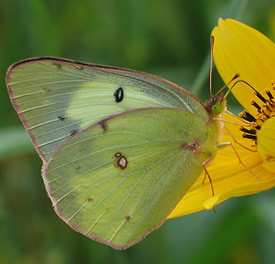
Female, not easy to tell from Orange Sulphur
Named for the orange it displays in flight during the summer and fall. In spring they tend to be yellow and very difficult to tell from the Clouded Sulphur (above species). They tend to be the only one of these two species to be found in southern coastal regions. These are regular garden visitors and can be seen in large numbers in meadows and old fields. Until you learn to tell these two species apart, you might want to just call them Colias species.
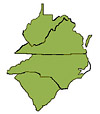 |
Wingspan: 1 1/2 - 2 3/8 inches Flight: Early March until late November |
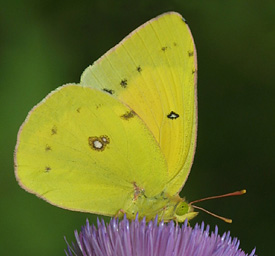
Male, note the dark margin on forewing.
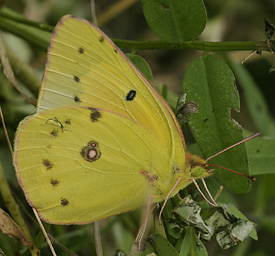
The dark margin extends beyond black spots
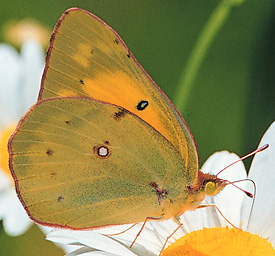
Female, hard to tell from Clouded Sulphur
It is our only large bright lemon yellow butterfly in the region and is easy to identify in flight. They have no wide dark margins like the other sulphurs. They tend to migrate north up the coast by the thousands in late summer and early fall. In the southern portion of the region the rare Orange-barred Sulphur (which has much more orange) might cause some confusion.
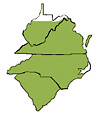 |
Wingspan: 1 1/2 - 2 3/8 inches Flight: Early March until late November |
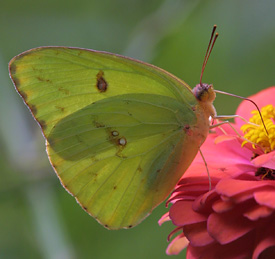
Female, note the small pink forewing margins
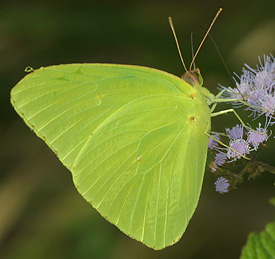
Male, usually pale and unmarked
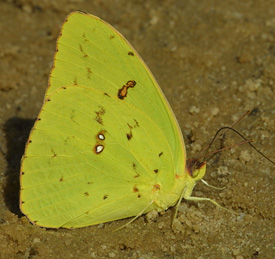
Strongly marked very fresh male
Very common in the southern portion of the region, it becomes rarer the further north you go. Can be seen by the hundreds around cultivated fields and meadows. This species shows much more orange than the slightly larger Clouded Sulphur and Orange Sulphur. In fall, some Sleepy Oranges will be rusty orange below as shown below far right; others may appear normal. Smaller specimens may be mistaken for the smaller less common Little Yellow.
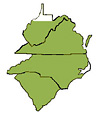 |
Wingspan: 1 3/8 - 1 7/8 inches Flight: Early March until late November |
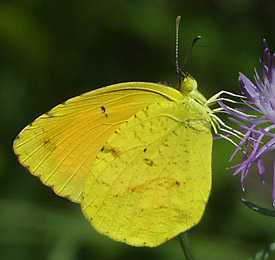
Male, blotches reduced on hindwing
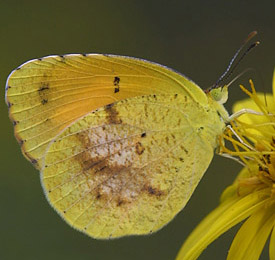
Female, bolder rust blotches on hindwing
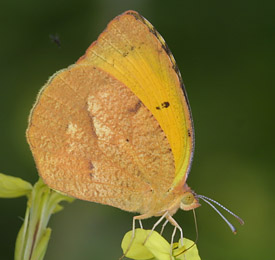
Fall form has rusty orange hindwing
Common Butterflies
Page #03
Go to Gossamer-wings
Go to Gossamer-wings